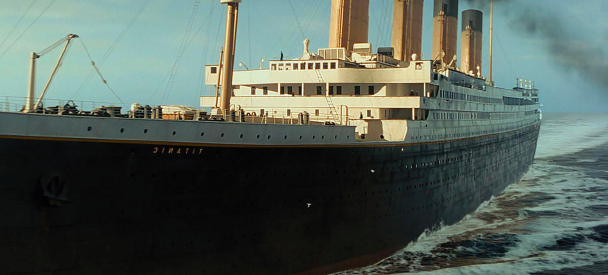TITANIC – THE ‘UNSINKABLE’ SHIP
The Titanic was the most luxurious passenger liner of its time. It was built in 1911 in Belfast, Northern Ireland. It was huge - 269 metres long - and people thought it was unsinkable because it used the most advanced technology at the time. It offered an on-board swimming pool, a gymnasium, a Turkish bath, libraries, and a squash court. First-class rooms had expensive furniture and other decorations. Titanic was also the first ship to have an electric elevator for second class passengers. Many of those who were travelling third-class were emigrants travelling to the United States from Ireland and Scandinavia.
On its first journey, in April, 1912, Titanic was travelling from Southampton, England to New York, the USA. At 11.45 pm on 14th April 1912, it hit an iceberg and sank two hours and forty minutes later on April 15, 1912. The biggest problem was that the Titanic had only 20 lifeboats, enough only for 1,178 people. Also, the third-class passengers could not escape easily from the bottom sections of the ship.
After Titanic hit the iceberg, the captain sent SOS signals for help. The closest ship was ‘Carpathia’ 58 miles (93 kilometres) away, and it arrived in about four hours—too late to rescue Titanic’s survivors. Of a total of 2,223 people, only 706 survived; 1,517 died. Most people died of hypothermia while they were waiting to be rescued in the -2°C water.
On September 1, 1985, an American-French expedition located the wreck of Titanic. It was found at a depth of 3,800 metres, south-east of Newfoundland, 22 kilometres away from where Titanic was originally thought to rest. Titanic has been the basis for many novels and films. The most known is the 1997 film Titanic, directed by James Cameron and starring Leonardo DiCaprio and Kate Winslet. It became the highest-grossing film in history. It also won 11 Oscars, including the best motion picture.

